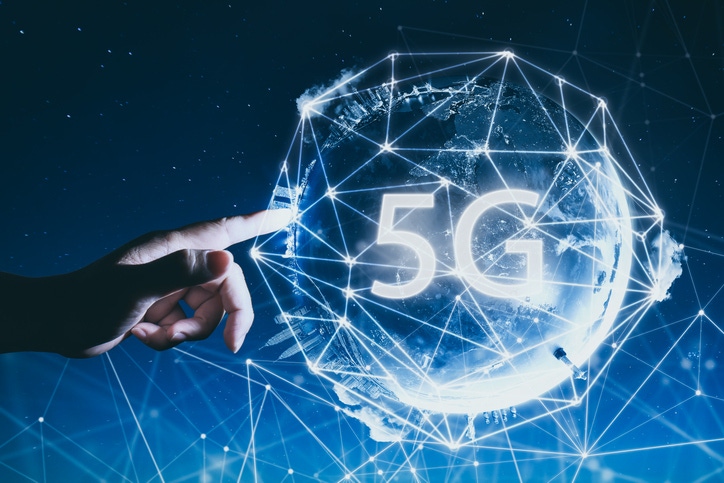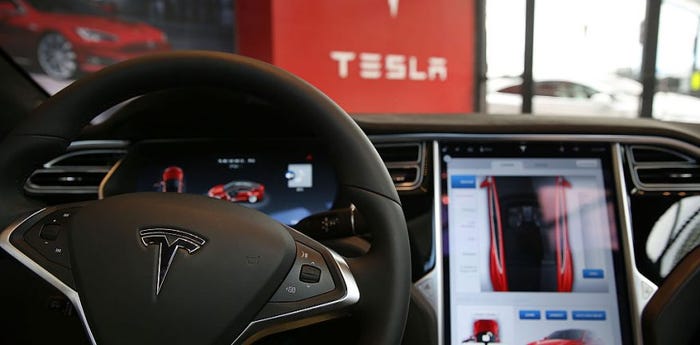5G and IoT: More Evolutionary Than Revolutionary for Now
The nexus of 5G and IoT (along with AI and edge computing) could drive a profound wave of innovation in the long run. But for the time being, expect more-incremental progress.
March 14, 2019

By Valerie Silverthorne
It can be tempting to think of the coming 5G mobile network as sort of the Holy Grail for IoT. In theory, it offers latency down to 1 millisecond. That’s at least 100 times faster than the blink of an eye. 5G also supports speeds of up to 10 gigabits per second, making it up to 100 time faster than 4G. It provides an easy gateway to edge computing while also supporting network slicing, enabling providers to provision dedicated slices for IoT applications.
But it’s not actually that simple for the alchemical-sounding synthesis of 5G and IoT. While 5G holds short-term promise for video-heavy IoT projects like autonomous cars, surveillance cameras and trouble-shooting drones, other applications — like AI on the factory floor — will need additional technical breakthroughs (narrowband/battery life) and aren’t likely to see a short-term boost from leaving 4G behind.
So what should engineers and developers consider when it comes to 5G and IoT? Seven experts weighed in with advice ranging from patience to practice with edge computing to remaining open to new business models.
Realistic Expectations
Sometimes it’s important to begin with a reality check. “The pitch for 5G is increasing bandwidth and reducing latency,” explained Zach Supalla, CEO and founder of IoT startup Particle. “Certain applications like autonomous vehicles need gobs of data and so does streaming media and those are all reasons 5G is exciting and compelling. But separate from that world, the majority of IoT does not care about any of those things. That’s not the world we live in. The rest of the world is all sensors, which sensors don’t tend to produce that much data. What matters more in our world is IoT cost reduction and reducing power consumption.” Supalla is looking to what he calls “5G2” or “5G also” — when 5G towers are widely deployed, lower power options are available and narrowband efforts have come to fruition — as the time 5G will have the biggest impact on the largest number of IoT efforts. “Most of the really important innovations happening now are not branded 5G,” he said.
To look at it from a different way, IoT projects need a wide variety of communications protocols of which 5G is just one, said Alok Shah, vice president of business development, strategy and marketing of networks at Samsung Electronics America. So make sure you have the right project in mind. “5G is the right choice for an IoT device if one or more of the following targets are required: data throughput of 1 gigabit per second or more, latency of 10 milliseconds or less, and device density greater than 100,000 per square kilometer,” Shah said.
Hurry up and Wait
Like every technology rollout, expect 5G and what it’s offering to take some time. “Some IoT apps will benefit from 5G at an earlier stage than others,” said John Delaney, associate vice president of European Mobility at IDC. “In the first two years, you need to think about 5G as a fast pipe like 4G, but with no fundamentally new capabilities,” he said. “In that phase, the IoT apps which benefit from high bandwidth will potentially benefit from 5G.” Delaney pointed to utilities, which won’t be early beneficiaries, but said camera-equipped drones will. This first phase will boost a “relatively small number” of IoT apps, but they’ll be high value ones.
When 5G hits its second phase, though, in 2021/2022, low latency will improve networking capabilities and remote command and control should be possible, Delaney said. “There will be a whole other class of applications in the second phase which will benefit from the fast response of the network enabled by 5G. That’s just something 4G can’t do at all.” By 2024 or 2025, the third phase should arrive and bring with it the promise of dramatically improved machine to machine communication, Delaney said. That’s the time frame when the number of truly “smart” cities should jump. “Today each individual app may not test the limit of 4G,” he said. “But when you start to think about parking, lighting and refuse management in aggregate, the connected devices are too numerous for 4G to support.”
Over the Edge
No matter the pace of 5G’s rollout, there’s more to think about than just speed. Ovum’s chief analyst Mike Sapien wants engineers to think of 5G as the opportunity to build software defined virtualized networks and consider what that could mean for new types of IoT devices and applications. “5G is a more distributed virtualized network and it’s going to allow many low latency apps,” Sapien said. “A distributed network involved in 5G may decide not to send everything to a central location to not overload the network. You’ll be able to parse data and filter data at the edge fairly efficiently using large databases that collect all the information but keep the detailed data at the edge. That’s not something that is currently efficiently possible with 4G.”
In fact, upwards of 60 percent of IoT-generated data might never need to be sent to a centralized location, said Paul Bevan, research director for IT infrastructure at Boor. “Much of the (remaining data) will be operational sense and respond data between IoT devices and local consolidation servers or gateways that will have a short shelf life and only need to be stored locally,” he said. “In other words it is processed at the edge and never hits the 5G network at all.”
That is a big reason why developers can start thinking outside the box when it comes to IoT apps, Sapien said. That ability to slice up how the data is handled will make it easier to create uses cases with endless combinations of starting and stopping actions with real time data analytics. And building in security at the edge will be easier too, he said. “I think this gives customers and application providers great flexibility to offer features differently. We’re going to see more software and more added-in security features.”
And now is the time to start practicing this, said Christine Boles, vice president, IoT group and general manager of the Industrial Solutions Division at Intel. “Network engineers and communications service providers can prepare their networks for improved 5G performance by implementing edge computing infrastructures today,” Boles said. “Like peanut butter and chocolate, 5G and edge computing is better together.”
New Networks = New Business Ideas
A patient mindset and some experimenting today will pay off in the long run when it comes to 5G and IoT, Bevan stressed. “Simply put, it brings more IoT projects that rely on high levels of remote interactivity with critical response time requirements into scope that have, until now, not been feasible,” he said. “It enables business to consider new business models and new product and service offerings that have the potential to disrupt existing markets and drive step changes in productivity.”
The convergence of edge, AI and 5G means developers need to be open to any possibility, echoed Steve Bell, a senior analyst covering IoT for Heavy Reading. “It’s what Donald Rumsfeld called ‘unknown unknowns,” he said. “We didn’t know what Facebook or Instagram were going to be when the World Wide Web was created. This combination of edge, AI and 5G is one of those types of situations.”
You May Also Like

.png?width=700&auto=webp&quality=80&disable=upscale)
.png?width=700&auto=webp&quality=80&disable=upscale)
.png?width=300&auto=webp&quality=80&disable=upscale)
.png?width=300&auto=webp&quality=80&disable=upscale)
.png?width=300&auto=webp&quality=80&disable=upscale)
